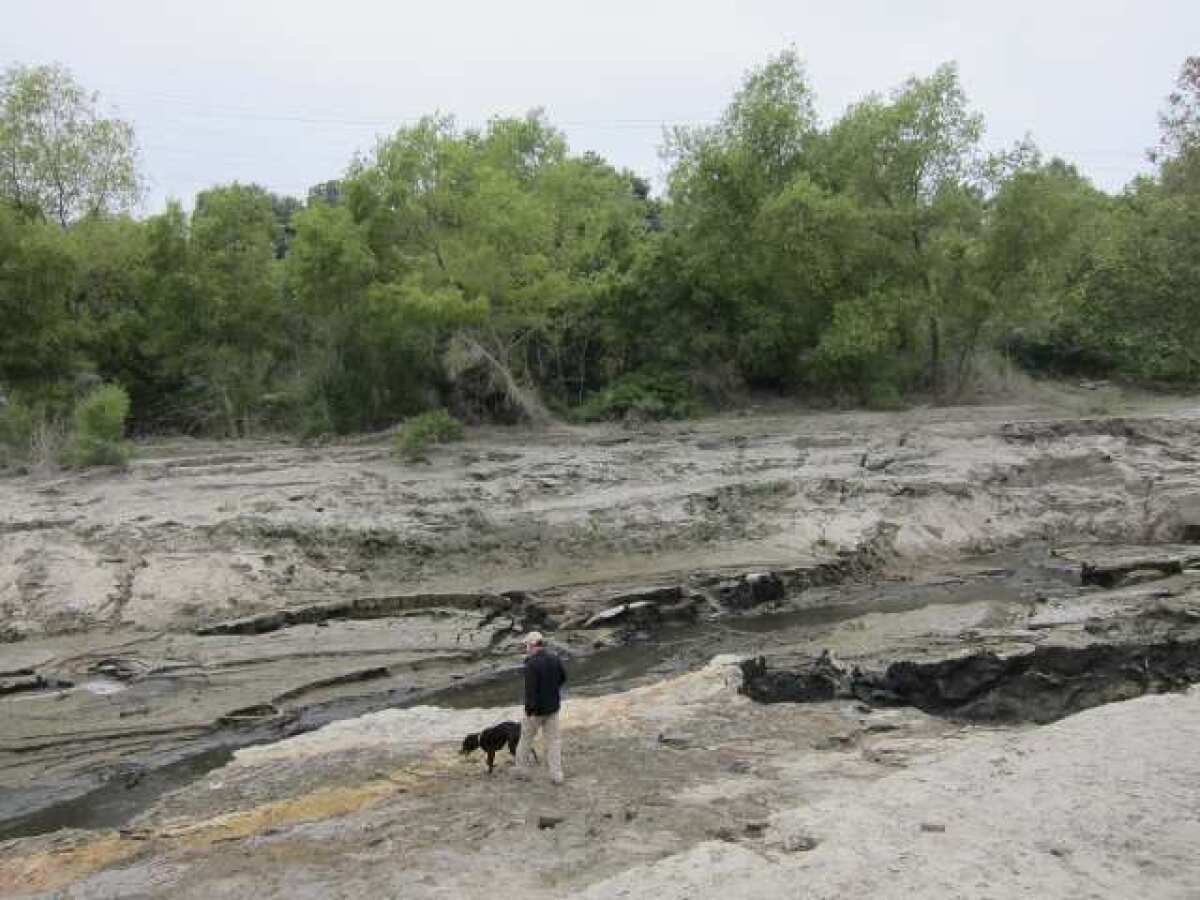A smarter way to attack L.A.’s sediment problem

- Share via
California’s coastal mountains have a compulsion to get to the sea. They are constantly sending sand and sediment downstream to the beaches. Or at least they’re trying to. But today, a system of 14 dams along the foothills of the San Gabriels prevents much of the sand from reaching the shore.
The result is a slowly eroding coastline, a network of ugly concrete storm channels where streams once flowed, and an ever-increasing accumulation of earth behind the dams.
Southern California rivers are notoriously unpredictable. Raging torrents in January can be dry arroyos in July, which makes flood control difficult. In the 1930s, after a period of major flooding in the Los Angeles basin, a group of talented engineers attempted to tame the area’s rivers by creating the system of dams and channels we have today. Once viewed as an innovative solution to protecting lives and property downstream, these inland dams are now exploding with tons of accumulated sediment and a diminishing number of nearby places to dump it.
At the Hahamongna basin behind and adjacent to Devil’s Gate Dam in Pasadena, where a hotly contested sediment removal project by the flood control division of the L.A. County Department of Public Works is being debated, the county has proposed removing as much as 4 million cubic yards of sediment. The project, which would destroy a thriving willow forest, would require one double-loaded dump truck to leave the excavation site each minute, six days a week between April and December, for five years. The projected cost is $68 million. And that is for just one dam.
Few of those who have studied the county’s system of dams would question the need for some sediment removal to protect the public safety downstream and the integrity of the dams themselves. The situation was exacerbated by the Station fire, which left denuded hillsides that washed into dam basins during winter storms, adding some 1.6 million cubic feet of sediment to the Hahamongna basin alone. But there is growing concern about the way the county manages sediment removal and water conservation.
Allowing sediment to accumulate for more than a decade, as happened at Devil’s Gate, and then playing catch-up with a massive removal project is causing strong opposition. The area is heavily used by hikers and mountain bikers, and an adjacent park has a busy Frisbee golf course and soccer field. The area abuts residential neighborhoods and is directly across the street from La Cañada High School.
Because many of the county’s dams are similarly located in multi-use areas, the objections being voiced about Devil’s Gate are likely to be raised again and again as the county considers managing its other sites. Many of those objecting question the wisdom of stopping the flow of sediment behind dams, only to truck it back up into foothill canyons where it doesn’t belong and is unlikely to stay put.
Treating sand and sediment as something of value, the way the L.A. County Sanitation District treats sludge, would be a better way. Rather than dump sludge as a waste product, the district processes it for use in the vegetable fields of Central California.
The mountains will continue to seek the sea. And the sole purpose of L.A. County’s dams should not be to stop the flow. New and creative solutions are desperately needed for managing the sediment that accumulates behind dams and the water that is diverted and often wasted over spillways and in concrete channels.
That is why many of those commenting on the environmental impact report now circulating for Devil’s Gate are asking for a fuller evaluation of other solutions before embracing a costly and environmentally reckless plan. We’ve called for the appointment of a blue-ribbon committee to work with county engineers on fully evaluating the options. If we don’t come up with a long-range, comprehensive plan for managing both sediment and the valuable rainwater that collects behind dams, we’ll find ourselves in this boat all over again in the not-too-distant future.
Massive, once-a-decade removal projects are the wrong approach. As Norman Brooks, professor emeritus of environmental and civil engineering at Caltech, put it in a statement to the county: “In the long run, a more uniform rate of removal might be preferred over the present situation with large amounts of ‘catch-up.’”
Let’s stop catching up and start planning for the future.
Christle Balvin is president of Hintz & Balvin Communications, which helped design earlier plans for Hahamongna. Her involvement today is as a community member.
More to Read
A cure for the common opinion
Get thought-provoking perspectives with our weekly newsletter.
You may occasionally receive promotional content from the Los Angeles Times.









